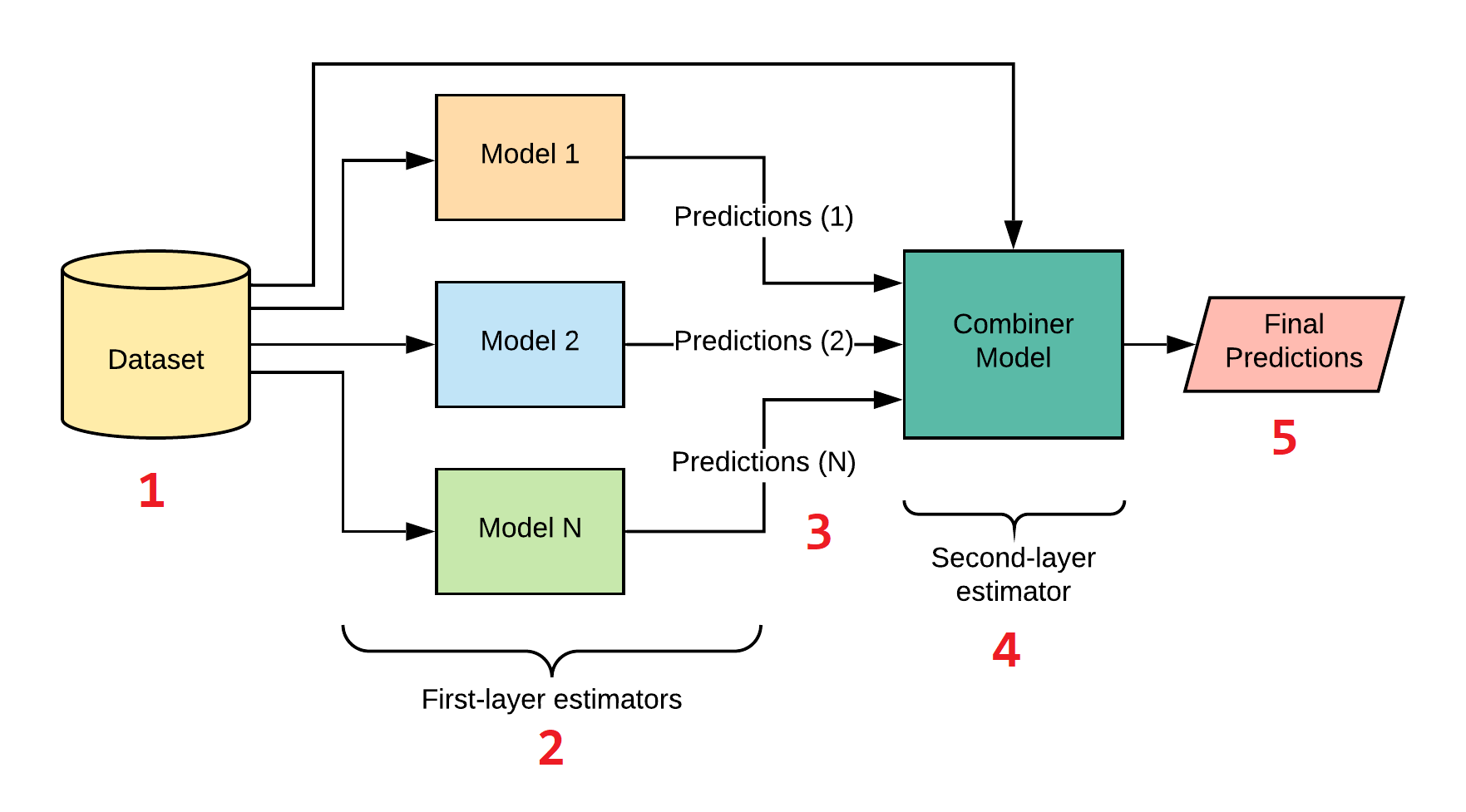Build your first stacked ensemble
Ensemble Methods in Python

Román de las Heras
Data Scientist, Appodeal
Stacking models with scikit-learn
Some features of stacking implementation from scikit-learn:
scikit-learnprovides stacking estimators (since version 0.22)- Compatible with other
scikit-learnestimators - The final estimator is trained through cross-validation
General Steps

General steps for the implementation:
- Prepare the dataset
- Build the first-layer estimators
- Append the predictions to the dataset
- Build the second-layer meta estimator
- Use the stacked ensemble for predictions
Stacking classifier
from sklearn.ensemble import StackingClassifier
# Instantiate the 1st-layer classifiers
classifiers = [
('clf1', Classifier1(params1)),
('clf2', Classifier2(params2)),
...
('clfN', ClassifierN(paramsN))
]
# Instantiate the 2nd-layer classifier
clf_meta = ClassifierMeta(paramsMeta)
# Build the Stacking classifier
clf_stack = StackingClassifier(
estimators=classifiers,
final_estimator=clf_meta,
cv=5,
stack_method='predict_proba',
passthrough=False)
# Use the fit and predict methods
clf_stack.fit(X_train, y_train)
pred = clf_stack.predict(X_test)
Stacking regressor
from sklearn.ensemble import StackingRegressor
# Instantiate the 1st-layer regressors
regressors = [
('reg1', Regressor1(params1)),
('reg2', Regressor2(params2)),
...
('regN', RegressorN(paramsN))
]
# Instantiate the 2nd-layer regressor
reg_meta = RegressorMeta(paramsMeta)
# Build the Stacking regressor
reg_stack = StackingRegressor(
estimators=regressors,
final_estimator=reg_meta,
cv=5,
passthrough=False)
# Use the fit and predict methods
reg_stack.fit(X_train, y_train)
pred = reg_stack.predict(X_test)
It's your turn!
Ensemble Methods in Python

